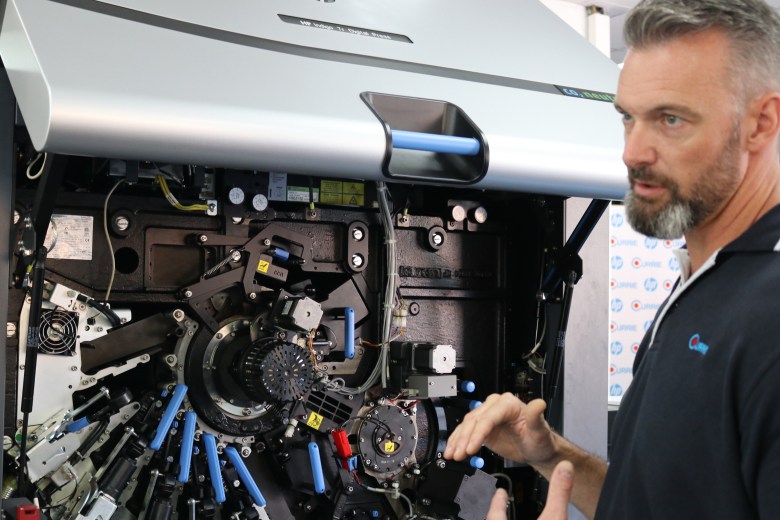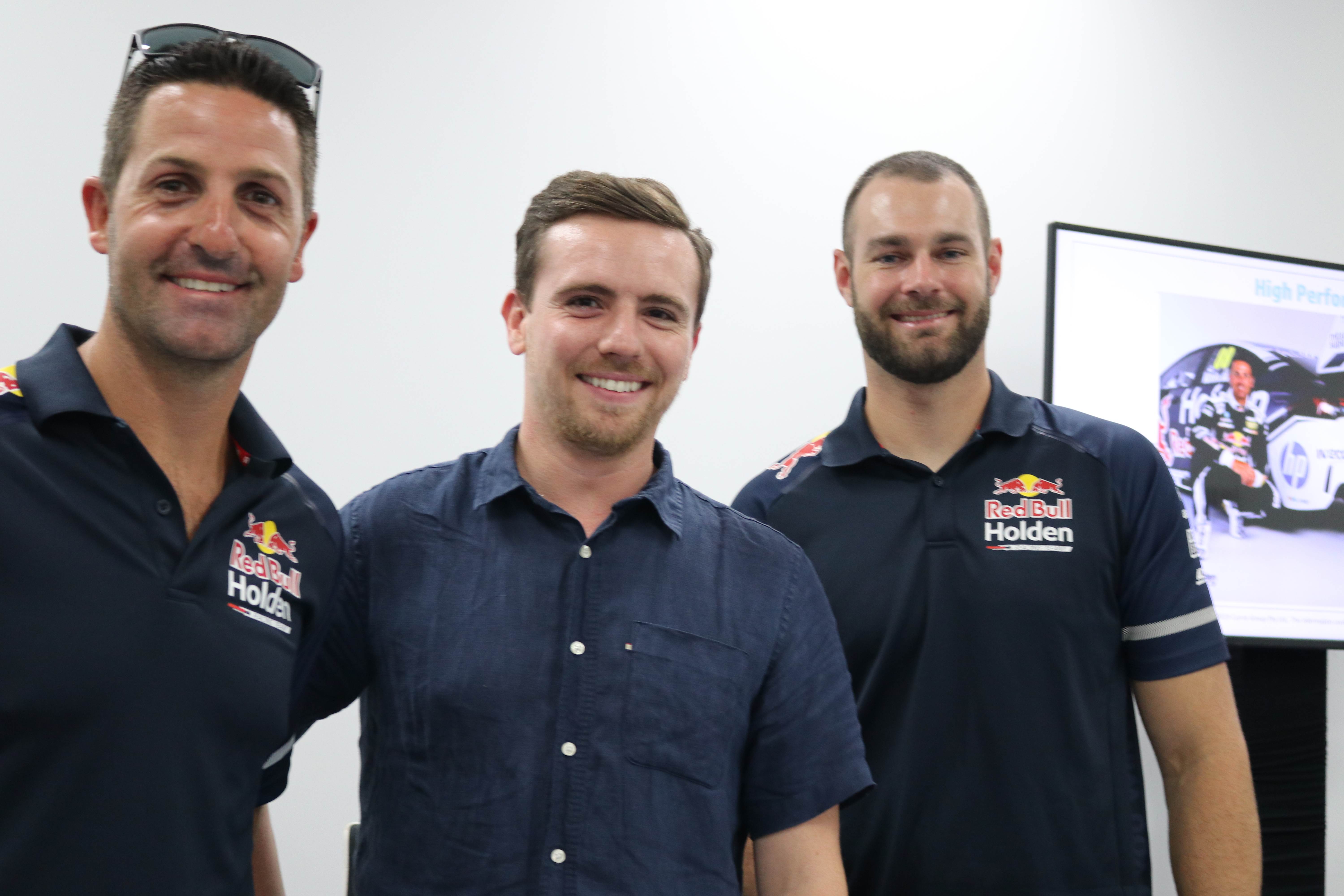
Currie Group’s launch of the HP Indigo 7r digital press got some extra grunt this week with Triple Eight racing team V8 legends Jamie Whincup and Shane van Gisbergen impressing 60 or more attendees with stories of life on the track.
The event at the Currie showroom in Sydney was one of a trio of launches for the reconditioned press which offers high performance output at an affordable price for printers seeking to upgrade their capabilities or dive into the digital market.
The event featured demonstrations of the HP Indigo 7r and Horizon finishing equipment.
The Real Media Collective chief executive officer Kellie Northwood was also there and spoke of the value of print and paper as a marketing tool, indicating that after declines in growth, the industry is shaping up to be back in the black in the next couple of years.
Currie Group sales and marketing director Phil Rennell says the HP Indigo 7r is a great option for printers seeking an upgrade or digital shift.
“It’s very logical because we take the old presses and bring them up to date at the factory in Israel to the latest specifications,” Rennell told ProPrint.
“HP have done a refurbishing process in the past but now it is a ground up and very comprehensive process because the machines are effectively remanufactured.
“They look brand new when the come out of the box.
“It is about bringing them out of the factory with the newest specification.”
HP partnered with Triple Eight racing last year and have since been providing tech support to the team, including the provision of 3D car parts as well as refining Triple Eight's car livery printing solutions in the future.

Whincup, himself the son of a Melbourne printer, spoke of the toll it took on his parents to get his racing career off the ground until a break as a 15 year old with a professional racing team took his career to the next level.
He also spoke of the benefits of having 3D technology and a printed car livery available to the racing team, as this saves time and money and also keeps the team’s cars under the 1395kg weight limit.
“All those parts bolt straight onto the race car. Plastic is great. It is light and now we can produce a part so much faster than what we used to be able to,” Whincup said.
“So an example say I want to design a new air vent for the top of my helmet. It was always really quick to sit down and get an engineer to draw it up on the CAD but then it would take months to actually get it. So we would have the designs but trying to get some time on the machines to produce the part took forever. But now we just send it off and it’s sped up the process massively.
“I don’t know what the percentage is but so many parts are straight off the plastic printer and straight on the race car.”
Printed car livery also saves time by removing the need to paint the car and also makes it easier to customise the look of the vehicle depending if there is a particular need at certain events for a specific look.
“It is definitely a lot quicker to be replaced and so much easier than having to paint the car.”
Jamie Picton from Sydney's Smack Bang Designs was the winner of the HP lucky door prize on the day.
Comment below to have your say on this story.
If you have a news story or tip-off, get in touch at editorial@sprinter.com.au.
Sign up to the Sprinter newsletter
